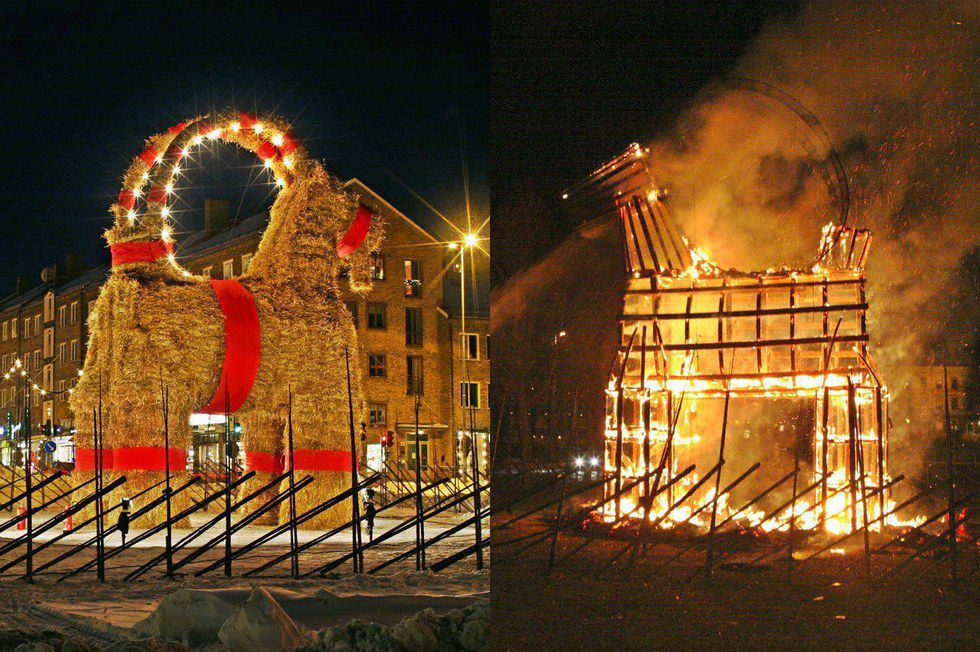In the United States and around the world people are beginning to string up bright lights, shop for last minute gifts, and gather their families and friends close to celebrate the holidays. For one particular country, a strange but quaint tradition is being observed. In the town of Gävle, Sweden amongst the reindeer and Santa Clause displays there towers a giant goat statue affectionately named Gävlebocken. The tradition of the building of Gävlebocken and his untimely method of demise is celebrating its 50th anniversary this year.
How did this giant goat tradition begin you may ask? According to Gävle history, a local advertising consultant thought that his town needed a larger version of the traditional Swedish Yule Goat, yes you read that right it is a Swedish tradition to have a Yule Goat and place it within the middle of the town square. The first goat was constructed in 1966, it towered at 43 feet high and was created using hay. The goat rose high and above the city from December 1st until it was mysteriously burned by an arsonist on New Years Eve night. The arsonist was found and convicted of vandalism; the city of Gävle had the goat insured for the subsequent years.
In the years following the responsibility of the construction and maintenance of the goat statue has fallen on numerous groups within the town and community. The average cost for the construction of Gävleblocken’s construction has been estimated to around 100,000 Swedish kronor, which is $10,882.69 in U.S. dollars. The goat continues to be constructed using the traditional material of hay interwoven and thatched to cover a wooden skeleton. The continued use of hay has the primary building material of the Gävle goat has made it an easy target for arson and destruction over the course of its existence.
Over its 50 years of being constructed the Gävle goat has been destroyed a total of 35 times. For a tradition that brings the town of Gävle and its people such joy, there is also a strange happiness in watching it being destroyed. Gävlebocken is located conveniently close to a firehouse and so setting the giant goat ablaze has become the favorite method of destruction for most vandals. The citizens of Gävle have no issue with the goat being burned but those who spend the money to construct it do, they have included many different security methods including installing security cameras, hiring paid security guards, and building high fences around the base of the statue. The vandals determination to bring down the goat wins in the end; guards have been bribed, security cameras have been disabled, a vandal has committed a hit and run where they hit the goat with their car to topple it over, and on a more impressive occasion the fences have been undermined by an arsonist archer shooting a flaming arrow into the goat’s hoof.
Gävlebocken, the holiday goat that began as a quirky Swedish town’s tradition has begun to grow in global recognition. Tourists from around the world flock to stand at its giant hooves and maybe witness its demise, one such tourist an American no less in 2001 was the unknowing arsonist when he had thought it traditional to set the goat ablaze. Gävlebocken’s fame has gone viral as well including an “official” Twitter account with 11.6 thousand followers using social media to record how long the giant goat lasts. As of November 27th of this year, unfortunately, Gävlebocken the Goat has been burned prematurely before the holiday season could even begin but he tweeted a farewell promising to return next year. RIP you magnificent giant Yule Goat, see you next year.






 mr and mrs potato head
StableDiffusion
mr and mrs potato head
StableDiffusion


















